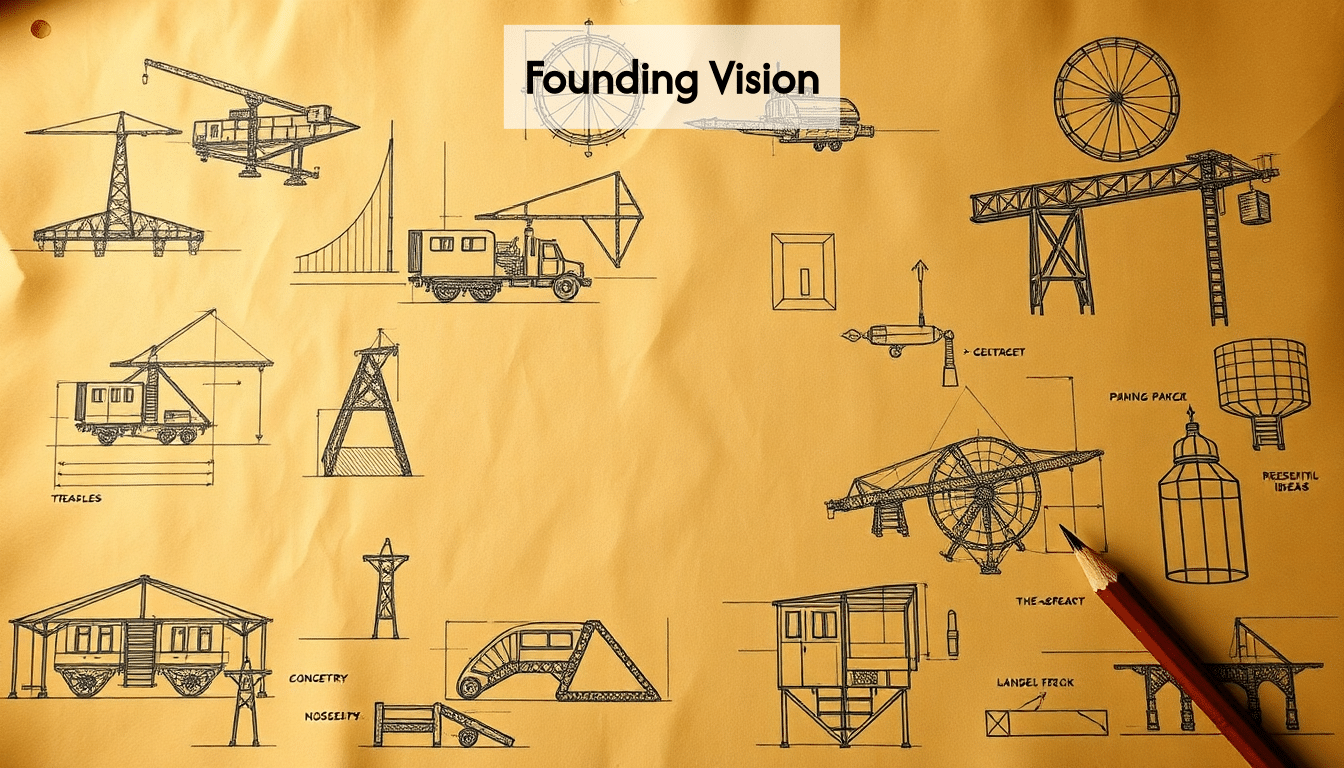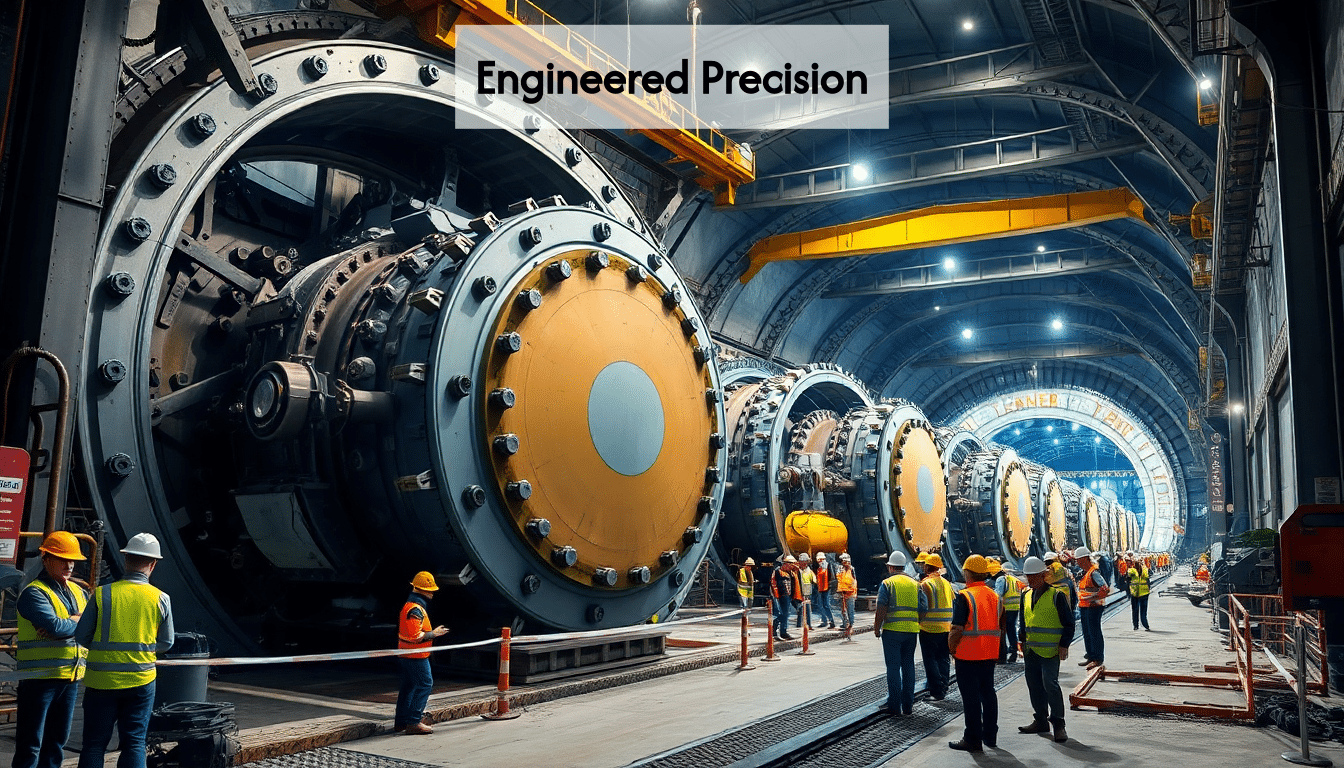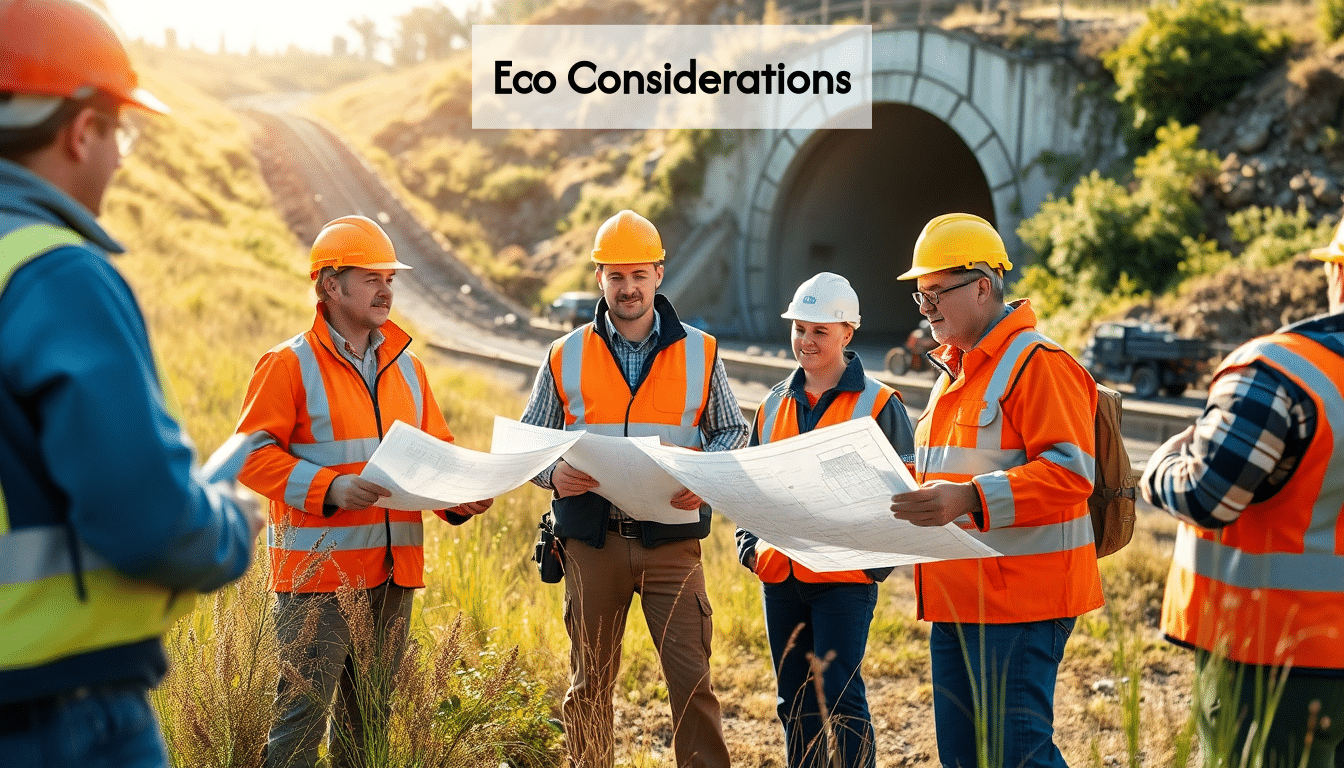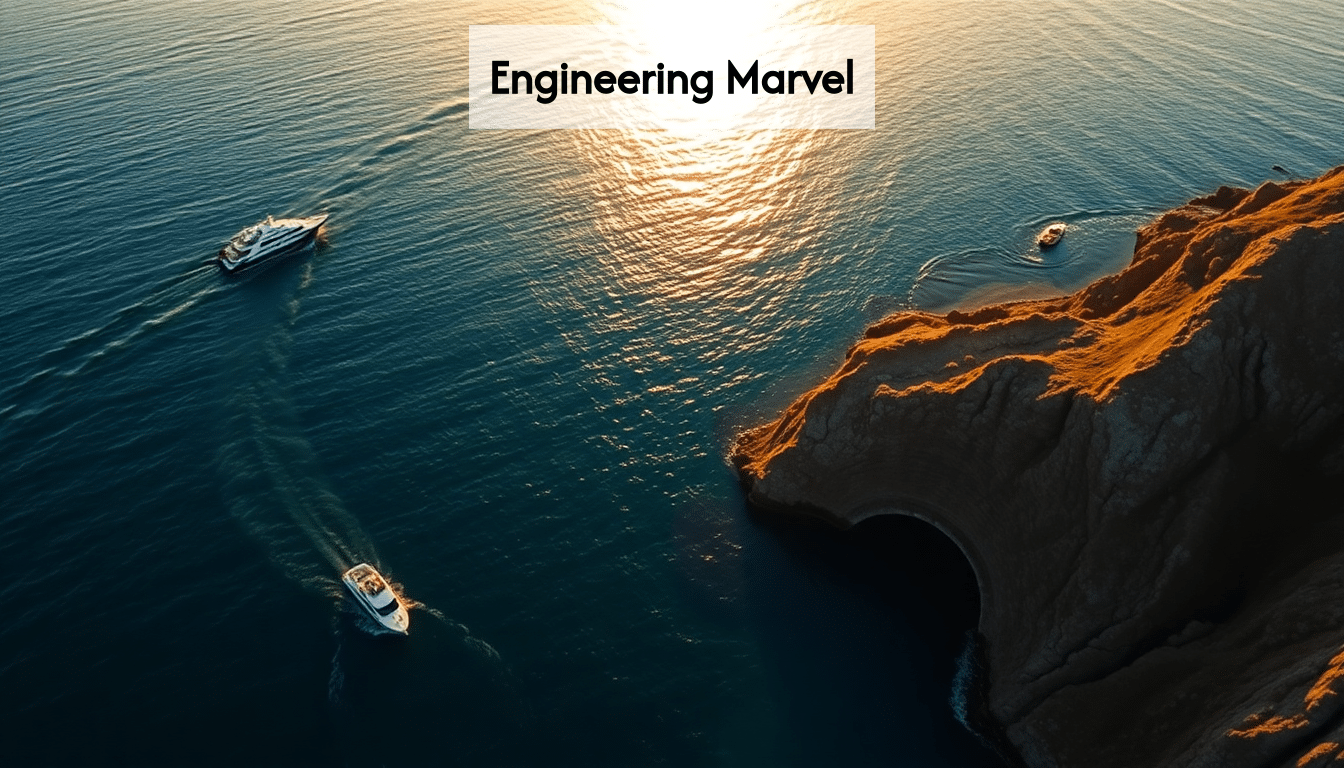Introduction to Eurotunnel Construction
Ah, the Eurotunnel construction! When you mention the term ‘Eurotunnel,’ the first visual that often springs to mind is the remarkable undersea passage connecting England and France, often whimsically referred to as the ‘Chunnel.’ But this marvel of engineering, encapsulated in the construction of the Channel Tunnel, is so much more than just a means to cross the English Channel. It’s a testament to human ingenuity, determination, and collaboration.
The story of channel tunnel construction is steeped in ambition and challenge. Can you imagine digging a tunnel under the turbulent English Channel, where trains could glide from one country to another seamlessly? Plus, it was no walk in the park to get to the point of breaking ground. Planning and negotiations spanned decades before the construction of Eurotunnel began, involving multiple stakeholders from the UK and France.
In essence, the building of the Chunnel was like orchestrating a grand symphony, with engineers, politicians, financiers, and workers all playing their parts to create this unprecedented railway connection. According to a famous quote by former British Prime Minister John Major, “The Channel Tunnel is a triumph of engineering… It symbolizes what can be achieved when we dare to dream big.”
Embarking on this massive construction project was like trying to build a bridge across a massive chasm — only this was a gaping, watery abyss! The construction of the Channel Tunnel didn’t just require incredible technical expertise; it also demanded tenacity and creativity to navigate the myriad challenges posed by geology, technology, and finances. In the upcoming sections, I’ll delve deeper into the evolution of this ambitious project, the hurdles faced during construction, and the real-world applications we now enjoy thanks to this monumental feat.

Historical Context: The Vision Behind the Channel Tunnel
To truly appreciate the audacity of eurotunnel construction, we need to rewind the clock and examine the historical context that set the vision for the Channel Tunnel. The idea of constructing an underground passage beneath the English Channel is older than you might think! It goes all the way back to the early 19th century when the first serious proposals appeared. Can you believe it? As early as 1802, a French engineer named Albert Mathieu had the audacity to envision a tunnel connecting France and England. Though his idea was dreamt up on paper and never came to fruition, it laid the groundwork for future endeavors.
Fast forward almost two centuries, and we arrive at a period of renewed interest in building the Chunnel. The 1950s and 1960s saw an explosion of economic growth, positioning the UK and France as eager partners in enhancing connectivity between their nations. The vision was not merely about adding another rail line; it was about fostering trade, tourism, and mutual understanding. The concept of a train tunnel under the English Channel began gathering speed, becoming a beacon of unity in a post-war Europe.
In 1986, the French and British governments formally approved plans for the Channel Tunnel construction, propelled by a profound understanding of what the project would symbolize: a landmark project of engineering prowess that could usher in a new era of European collaboration. As Lord Andrew Adonis, a UK politician, once commented, “The Channel Tunnel is both a connection and a corridor — a great achievement that binds us closer together.”
Of course, no grand vision is without its skeptics. Many questioned the feasibility of the project, but the determination of those who sought to see this dream realized kept the momentum going. Thus began the earnest preparations for the construction of the Channel Tunnel, setting the stage for one of the most ambitious engineering feats in history. In the next section, we’ll explore the intricate planning process and the challenges that arose before the digging even began.

Key Players and Innovations in Chunnel Construction
When we think about eurotunnel construction, it’s not just about the incredible engineering; it was also about the multitude of key players who made it their mission to bring the Channel Tunnel to life. Imagine a stage packed with brilliant minds, each contributing their unique talents to this monumental project. The cast included governments, engineers, laborers, and corporations, all working together like a well-oiled machine.
At the helm of this endeavor were two primary entities: Eurotunnel, the private consortium, and the respective governments of the UK and France. What’s truly fascinating is how Eurotunnel came into existence in 1987, bringing together a mix of private investors who believed in the dream of creating a tunnel beneath the sea. Notable figures such as Charles de Gaulle and Margaret Thatcher also played pivotal roles, lending their political weight to hammer out agreements and forge partnerships that were crucial for progress.
But let’s not overlook the engineers! A line of skilled professionals faced the monumental task of figuring out how to dig a massive tunnel deep under the English Channel. A key innovation was the use of Tunnel Boring Machines (TBMs), colossal devices designed specifically for the construction of tunnels. These giant machines, likened to the mythical creature from which they got their name, excavated through the rich layers of earth, clay, and chalk with remarkable precision.
You’d think it was all sunshine and roses, but construction wasn’t without hiccups. Engineers encountered not just rocks, but also water, fragmentation, and the unexpected geological quirks of the terrain. When faced with these challenges, innovators in the field applied advanced techniques to keep the project on track. For instance, techniques inspired by the construction of subway systems in major cities helped streamline operations.
Even more fascinating were the technological advancements made during the construction of eurotunnel. The project pushed the boundaries of existing tunneling practices, leading to breakthroughs that would benefit future underground endeavors worldwide. A prime example is the combined use of two rail tunnels and a service tunnel, allowing for a more efficient and safe operation of trains through the channel.
As we can see, the building of the Chunnel wasn’t just about boring through the ground; it was about collaboration, innovation, and the determination to make a long-held dream a stunning reality. In the next section, we’ll delve into the actual construction experience, the challenges faced, and the overcoming of obstacles as laborers braved the depths of the Channel.

The Techniques and Challenges of Building the Eurotunnel
When it comes to eurotunnel construction, one can’t help but marvel at the extensive techniques employed during the building of the Channel Tunnel. The task was akin to piecing together a massive jigsaw puzzle while blindfolded — and in a race against time, no less! Let’s dig into the details, shall we?
Innovative Techniques at Play
As I mentioned earlier, one of the crown jewels of this project was the Tunnel Boring Machine (TBM). These cylindrical giants weighed up to 1,000 tons and, operating at a speed of about 10 meters per day, could bore through large sections of the earth at astonishing speeds. It’s hard to wrap my head around the sheer scale of these machines; they even featured cutting-edge technology, including navigation systems, that monitored everything from geological conditions to operational efficiency.
Additionally, the construction of the Chunnel relied on a method called the “Sequential Excavation Method” (SEM). This allowed workers to excavate in stages, thereby reducing the risk of cave-ins and controlling the stabilization of the tunnel walls. Think of it like building a house one brick at a time instead of toppling everything into one go!
Facing Unique Challenges
But let’s be real — no smooth sail here! The project wasn’t just a merry walk in a park; challenges lurked at every corner. Perhaps the most formidable opponent was water. The English Channel has a notoriously high water table, and maintaining a dry work environment was crucial. Workers faced the constant threat of subterranean floods, which could derail progress drastically. According to tunneling engineer John McArdle, “Controlling the water was like trying to hold back a tidal wave with a sieve.”
In order to tackle this, the team employed a process called “grouting” — injecting cement into the ground to create a solid waterproof barrier. Just imagine plumbing but on an epic scale!
Another significant challenge came from the geological surprises that awaited the builders. The team encountered varying soil types, fragile chalk beds, and even faults in the earth that constantly kept the engineers on their toes. Each of these variables posed its own risks, complicating construction schedules, and requiring rapid adaptation of methods.
Labor Force
You can’t have eurotunnel construction without the unsung heroes — the labor force! Thousands of workers toiled in the cold, dark depths of the channel, showing immense bravery and unyielding determination. Many were experts in their fields, bringing experience from previous tunneling endeavors in places like new York or Tokyo. Remarkably, the culture of safety and thorough training meant that despite the challenging conditions, accident rates remained relatively low.
In retrospect, the techniques and challenges of building the Eurotunnel reflect not just a fight against nature, but an inspiring testament to human resilience and ingenuity. Next, we will discuss how these colossal efforts culminated in the grand opening of the Channel Tunnel and what the project means for Europe today!
Environmental and Engineering Considerations in Channel Tunnel Building
As we dive deeper into the intricate world of eurotunnel construction, it’s essential to shine a spotlight on the critical environmental and engineering considerations that shaped the building of the Channel Tunnel.
Environmental Concerns
First, let’s address the elephant in the room—or should I say, the watery giant underneath the English Channel? The construction of such a massive project inevitably carries latent environmental concerns. From the outset, stakeholders were acutely aware that disrupting ecosystems could lead to ramifications far beyond construction sites. An extensive Environmental Impact Assessment (EIA) was conducted prior to breaking ground. This assessment was a monumental task, involving studies on everything from marine wildlife to potential water pollution. Yes, our little tunnel project suddenly became a mega-detective novel of ecological significance!
With efforts focused on minimizing adverse effects, construction teams established measures to protect marine life and local habitats. For example, local fisheries were consulted, and commitments were made to monitor and mitigate any disruptions during the digging phase. Engineers even worked around the breeding seasons of sensitive species to lessen the impact.
Engineering Solutions
On the engineering front, the construction of the Channel Tunnel was a feat of modern design. The engineering team ensured that the tunnels had adequate steering and stability to adapt to the dynamic geological conditions. This adaptability was especially vital given that the English Channel is home to unpredictable tides, currents, and—in case you didn’t guess—the odd tourist-driven hovercraft!
To further ensure stability, engineers employed reinforced concrete segments, which not only provided strength but also helped create an airtight seal to deal with the pesky issue of water ingress. Additionally, noise-mitigation strategies were implemented, focusing on reducing vibrations from the high-speed trains traveling through this underground wonder.
Lighting was another area of innovation. Engineers designed energy-efficient lighting systems within the tunnels to enhance visibility for workers and greatly improve safety conditions. It’s a bit mind-boggling when you consider how an aesthetic detail like lighting can have such profound safety implications!
Sustainability Initiatives
What’s even more impressive is the legacy of sustainability left behind after the Channel Tunnel was completed. The project inspired ongoing commitments to environmental responsibility in subsequent construction efforts across Europe. From utilizing high-efficiency materials to implementing energy-saving technologies in the trains themselves, the ethos of sustainability became woven into the fabric of the Channel Tunnel’s identity.
In the next section, we’ll explore the grand opening of the Channel Tunnel, and how this transformative project has changed travel and trade between the UK and continental Europe for generations to come!
Milestones of the Construction of the Channel Tunnel
When I think of eurotunnel construction, I can’t help but feel like I’m telling the tale of an epic journey filled with significant milestones that paved the way for the grand opening of the Channel Tunnel. Building the Chunnel was not merely a task; it was a saga of achievement, pride, and sometimes, nail-biting suspense. Let’s take a trip down memory lane and map out some of the pivotal moments that marked this incredible endeavor.
The Groundbreaking Ceremony
First up on our milestones list is the ceremonial groundbreaking, which took place on December 1, 1987. It might sound a bit like a glorified shoveling event, but trust me, it was much more! This moment signified the official start of the construction of the Channel Tunnel, with dignitaries from both the UK and France brandishing golden shovels and laying the first stones in a media frenzy.
Tunnel Boring Begins
Just a year later, in 1988, the first Tunnel Boring Machine (TBM) began its journey. This marked a critical milestone in the construction of eurotunnel as workers nervously held their collective breath. What if the machine got stuck? Fortunately, the TBM made its way through the ground, carving out the path for what would become a historic engineering achievement. By June 1990, the TBMs had successfully crossed the Channel, connecting the UK and France under 40 meters of water! Talk about a nail-biting underground river crossing!
Overcoming Hurdles
Of course, it wasn’t all smooth sailing. The late ’90s presented unique hurdles, specifically with water ingress, which had engineers scrambling to devise new solutions. During September 1990, an unexpected flooding incident highlighted the importance of water-control measures. This issue drove home the point that in the world of construction, surprises were just part of the job description. But through grit and innovative adjustments, the team pushed forward.
The Final Connection
Then, in May 1991, an astonishing feat occurred: the final connection of the tunnels was completed. On this day, the two halves of the Channel Tunnel joined together beneath the waves, a moment that must have felt like a construction team’s version of an award ceremony.
The Grand Opening
Fast forward to May 6, 1994 — the day when the Eurotunnel was officially opened to the public! Thousands flocked to both ends of the tunnel to relish the moment as a train made its inaugural journey through the newly minted connection. It was a day to celebrate not just the completion of a project, but the realization of a dream that had been decades in the making.
The milestones in the construction of the Channel Tunnel reflect not just a timeline of events but a narrative of determination, innovation, and collaboration — a reminder that great things often come from working through challenges together!
In the next section, we will explore the long-term impact of the Channel Tunnel on transportation and trade, and how this engineering marvel continues to shape the relationship between the UK and Europe.
Technological Advancements from the Construction of Eurotunnel
As we revisit our journey through eurotunnel construction, let’s take a moment to appreciate the remarkable technological advancements that emerged from this monumental project. Building the Channel Tunnel was not just an engineering feat; it also laid the groundwork for innovations that would ripple across various fields and industries. Buckle up as we explore some of the game-changing technologies that stemmed from this underground marvel!
Tunnel Boring Innovations
Firstly, let’s talk about the stars of the show: the Tunnel Boring Machines (TBMs). While TBMs were already in use before the Channel Tunnel project, the Chunnel’s construction pushed these machines to the next level. Engineers incorporated real-time navigational tools and advanced sensors into TBMs, which greatly improved their precision and effectiveness. Imagine a giant metal beaver burrowing underground, mapping its path as it goes — that’s essentially what the new TBMs became!
As a result of these enhancements, TBMs gained the ability to adjust in real-time for changing soil conditions and navigational challenges. This technology remained influential for future tunneling projects, such as subway systems in major cities, further highlighting how eurotunnel construction set a new bar for tunneling excellence.
Enhanced Safety Protocols
The Channel Tunnel project also led to advancements in safety protocols and monitoring technologies for tunnels. The challenges faced during construction prompted engineers to develop rigorous safety measures, which included advanced ventilation systems and comprehensive monitoring for structural integrity. These systems now form standard practices in tunnel construction and operation globally, ensuring that safety remains a priority wherever digging and underground travel occur.
Communication and Control Systems
As connectivity plays a pivotal role in today’s project management, the Channel Tunnel elevated communication and control systems to new heights. This initiative saw the introduction of digital communication systems that allowed real-time updates and remote coordination among various teams. Built for constant operation, these systems enabled the seamless exchange of information between the trains and the control centers, ensuring effective monitoring of operations and safety. The commitment to establishing these high-tech systems inspired the integration of similar digital frameworks in other transport networks.
Eco-Friendly Technologies
Finally, the Channel Tunnel also laid the groundwork for advancements in eco-friendly transportation. With a later focus on sustainability, trainers were designed to be energy-efficient by relying on electricity rather than fossil fuels. It served as a catalyst for eco-conscious initiatives and technologies in other transport systems across Europe.
Today, the Eurostar trains operating through the tunnel are known for their energy-efficient operations and lower emissions compared to traditional fuel-powered trains. This legacy fuels the momentum for more environmentally friendly innovations in rail transport worldwide.
In summary, the construction of the Eurotunnel was more than just about digging a tunnel beneath the English Channel; it was a launchpad for technological advancements that have had profound, lasting impacts — not only within the realm of tunnel engineering but across many sectors. As we comfortably ride the trains zooming through this underground wonder, it’s crucial to acknowledge the brilliance behind those innovations, lighting the path for an evolving future. In the upcoming section, we will examine the lasting impact of the Channel Tunnel on trade, travel, and relationships between the UK and continental Europe.
The Significance of the Train Tunnel Under English Channel Today
Fast forward to the present day, and the significance of the eurotunnel construction, specifically the train tunnel under the English Channel, cannot be overstated. It has matured into not just a mere passageway, but a vital artery that keeps the pulse of trade, travel, and cultural exchange beating steadily between the UK and mainland Europe. Let’s take a closer look at the multifaceted impact this engineering marvel has had over the years.
Enhanced Connectivity
To begin with, the Channel Tunnel has revolutionized connectivity. Imagine being able to hop on a train in London and disembark just over two hours later in Paris! Thanks to Eurostar, the high-speed service operating through the tunnel, it has become a breeze to traverse the Channel. The benefits extend beyond tourists, as businesses rely heavily on swift and efficient transportation of goods and services. In fact, the Eurotunnel is responsible for moving approximately 17 million travelers and 1.6 million freight vehicles each year. That’s a substantial volume feeding into the economies on either side of the Channel!
Economic Impact
From an economic perspective, the construction of the Chunnel has proven to be a game-changer. The ease of movement has fostered trade relationships and enhanced economic activity. Companies can now get their products to new markets much faster, leading to growth and expanded opportunities for trade. A report from the British Chambers of Commerce estimated that the Channel Tunnel’s presence adds around £4 billion to the UK economy annually. That’s a respectable return on investment for a project that combined vision with engineering excellence!
Cultural Exchange
Moreover, the Channel Tunnel serves as a bridge—not just physically but culturally. It contributes to a deeper understanding between the UK and its European counterparts. People feel more encouraged to explore each other’s cultures, traditions, and cuisines thanks to the rapid transport options available. Whether it’s Londoners indulging in fresh French pastries or Parisians enjoying a weekend in England, the tunnel has opened up an exciting exchange of ideas and experiences across borders. The chunnel has truly fostered a sense of European unity amid diversity.
Challenges Ahead
However, not everything has been plain sailing. While the Channel Tunnel has been a beacon of connectivity, it is not immune to challenges. Issues such as Brexit have raised questions about future travel and trade agreements, creating uncertainty in the long-term impact on the tunnel’s operations. Nevertheless, the underlying infrastructure remains invaluable, and it offers the potential for robust collaboration and recovery among nations.
In conclusion, the significance of the train tunnel under the English Channel today extends far beyond its walls and tracks. As an indispensable route for trade, travel, and cultural engagement, eurotunnel construction has transcended mere transportation to become a vital symbol of connectivity in a rapidly globalizing world. In the next section, we will look at what the future might hold for the Channel Tunnel and the ongoing evolution of this remarkable engineering feat.
Conclusion: Legacy of Channel Tunnel Construction
As we reflect on the incredible journey of eurotunnel construction, it’s clear that the legacy of the Channel Tunnel goes far beyond its physical structure. This engineering marvel represents a monumental achievement in not only the realms of design and technology but also in bridging geographical divides and fostering international relationships.
The decision to dig deep into the bedrock of the English Channel was not just about logistics and engineering; it was about vision, determination, and collaboration among nations. With each layer of earth that was excavated, a commitment to connection and collaboration was unearthed—an ethos that persists today.
The profound impact of this underground marvel is evident in its role as an economic engine for both the UK and France. Enhancing the speed of transport, boosting trade, and encouraging cultural exchanges have made the Channel Tunnel an indispensable asset for both countries, generating billions in economic activity and facilitating millions of journeys each year.
Furthermore, the technological advancements driven by this project have set new standards in tunneling and train transportation that continue to resonate across the globe. The innovations born from the challenges faced during eurotunnel construction serve as a case study for future projects, highlighting the importance of adaptability, safety, and sustainability in engineering.
Yet, as remarkable as this project has been, the journey doesn’t end here. The Channel Tunnel stands as a symbol of unity and resilience, ready to adapt to whatever challenges the future may hold—whether that be new technologies, changing travel patterns, or the impacts of global events such as Brexit.
In a world that often feels increasingly fragmented, the Channel Tunnel teaches us that collaboration can conquer obstacles and that connections lead to shared prosperity. Its legacy is one of hope and progress; it’s a living testament to what we can achieve when nations come together with a common goal. As we step boldly into the future, we do so with the lessons learned and the bridges built through the unprecedented journey of constructing the Channel Tunnel.
Frequently Asked Questions
What is the Eurotunnel, and why is it significant?
The Eurotunnel, commonly known as the Channel Tunnel, is a 50.45 km (31.4 miles) undersea tunnel connecting England and France. It plays a vital role in enhancing connectivity, boosting trade, and fostering cultural exchange between the UK and continental Europe.
Who were the key players involved in the construction of the Channel Tunnel?
The construction involved a collaboration between the private consortium Eurotunnel and the governments of the UK and France. Notable political figures, including Margaret Thatcher and Charles de Gaulle, also played pivotal roles in bringing the project to fruition.
What innovative techniques were used in the construction of the Eurotunnel?
The construction of the Eurotunnel utilized Tunnel Boring Machines (TBMs) for excavation, the Sequential Excavation Method (SEM) for safer tunneling, and advanced water control measures like grouting to tackle challenges posed by the water table of the English Channel.
How has the Channel Tunnel impacted trade and travel in Europe?
The Channel Tunnel has significantly streamlined travel, allowing passengers to travel between London and Paris in about two hours. It handles approximately 17 million travelers and 1.6 million freight vehicles annually, thus boosting trade and economic interaction between the UK and Europe.
Building Bridges in Construction Recruitment
As we navigated through the remarkable journey of Eurotunnel construction, one truth stands clear: monumental projects thrive on skilled professionals who can overcome challenges head-on. Just as engineers faced the daunting task of boring through unpredictable geological formations and managing immense water ingress issues to bring the Channel Tunnel to life, today’s construction companies are in constant need of talent capable of tackling their own set of complex challenges.
Are you a construction professional looking to make your next big move? At The Amundson Group, we specialize in connecting highly skilled individuals like you with top-tier opportunities in various construction sectors, including heavy civil, commercial, and site development. Our extensive network and dedication to quality placements ensure that you are placed in positions where your expertise will shine—just as the Channel Tunnel shines as a testament to engineering ingenuity.
If you’re ready to build your future, take the first step NOW! Visit our user-friendly portal for job placement services and unlock a treasure trove of opportunities in the construction industry. Join us and become part of the legacy that shapes our world!





